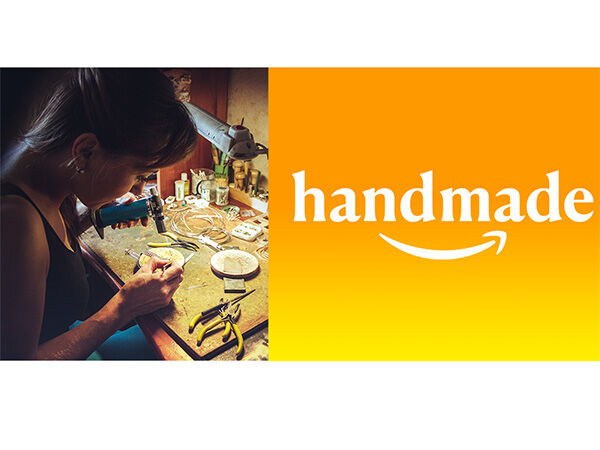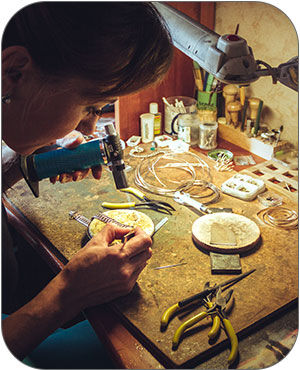How to Sell Your Handmade Jewelry Through Amazon Handmade
If you're looking for a new platform to sell your handmade jewelry, Amazon Handmade could be for you. Amazon is one of the top shopping websites in the world. Read on to learn how its success can benefit your jewelry-making business and how to get started on the platform.
Apply and Create an Account
Before you create a shop and list your designs, you need to sign up for an Amazon seller account and fill out an application. To do this, you'll need to have the following ready:
- A business email address
- A credit card
- A government-issued ID
- Tax information
- Your phone number
- Bank account information
A professional seller account costs $39.99 per month, not including the selling fees. However, if you're approved to sell items through Amazon Handmade, the monthly fee is waived.
After setting up a seller account, it's time to submit an application. You'll be asked for basic information, like the name and address of your business, photos of your products, your production process and other information. Once completed, applications usually take about a week to be reviewed for approval.
Setting Up Shop
After you're approved to sell through Amazon Handmade, you can set up your shop. First things first, you'll need to set up your Maker Profile. This page will act as your storefront and provide customers with information about what you make, your creation process and your business practices. You can also upload a profile photo and a header image that you can use to display products or show off your workspace.
The next step is to post your jewelry designs. For each item, you'll create a title and product description, choose a listing price, note how many you have in stock, and list a production time. Next, you'll need to upload at least one high-quality photo of the item that's free of any distracting elements and shows the product in detail. Unlike Etsy, Amazon listings never expire, so editing product information or adding new photos as items evolve is easy to do.
Finally, you'll need to choose your shipping rates and preferences through the "Shipping Settings" option on your seller page. You can choose to arrange shipping prices based on each item's size or weight, or you can set shipping to vary based on the total cost of the order. You'll also be able to edit which regions you want to ship to and at what speed. Using the USPS website to estimate rates is a good idea. When considering shipping rates, it's important to factor in the cost of packaging, tape and other materials to avoid short-changing yourself.
After someone places an order, you can find customer information, print packing slips and schedule shipping dates through the "manage orders" section of your seller page. This section also helps you keep track of purchases and offers purchasable shipping labels so you can save time at the post office.
Things to Consider
When deciding if Amazon Handmade is right for your jewelry business, there are a few things to consider. The most important is Amazon's fee structure. Unlike Etsy, Amazon doesn't charge you to create a posting; however, they take a 15% "referral fee" from each sale. This is much higher than other selling sites, and factoring this percentage into your pricing structure could raise it significantly.
Amazon also offers warehouse storage and Prime shipping options for artisans who sell a high number of items each month. If you want to take advantage of this option, all items must be made and shipped to Amazon beforehand, limiting your ability to post the same items on other selling platforms.
Other important factors to note are the product categories and customer base. Depending on what kind of goods you make, Amazon Handmade has far fewer product categories than other selling platforms, which could limit some designers. If, for example, you create a large-scale, strictly decorative piece using jewelry-making supplies, you'd have to list it as "home décor". Under the "normal", mass-produced facet of Amazon's sales, far more categories are available, as well as a multitude of other consumer-friendly options that could hinder a jewelry designer's growth on the site. The typical Amazon consumer is used to searching for what they want directly, finding it, selecting the fastest (or cheapest) shipping option, and making the purchase ... no questions asked. When shopping from an Amazon Handmade seller, production and shipping times are longer and finding the exact item they want, whether through searches or a custom order, takes more effort on their end. Those who value handmade goods will be willing to put in the extra energy, but others may not be, ultimately affecting your sales and success.
Like any online sales platform, Amazon Handmade has its fair share of pros and cons. Understanding the in's and out's of each site allows jewelry designers the freedom to choose which platform is right for them and their business.
Have a question regarding this project? Email Customer Service.
Copyright Permissions
All works of authorship (articles, videos, tutorials and other creative works) are from the Fire Mountain Gems and Beads® Collection, and permission to copy is granted for non-commercial educational purposes only. All other reproduction requires written permission. For more information, please email copyrightpermission@firemtn.com.

